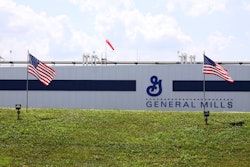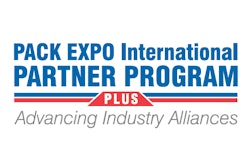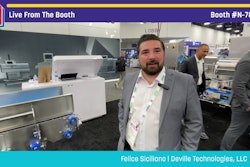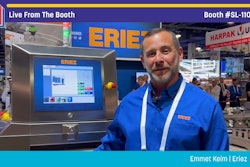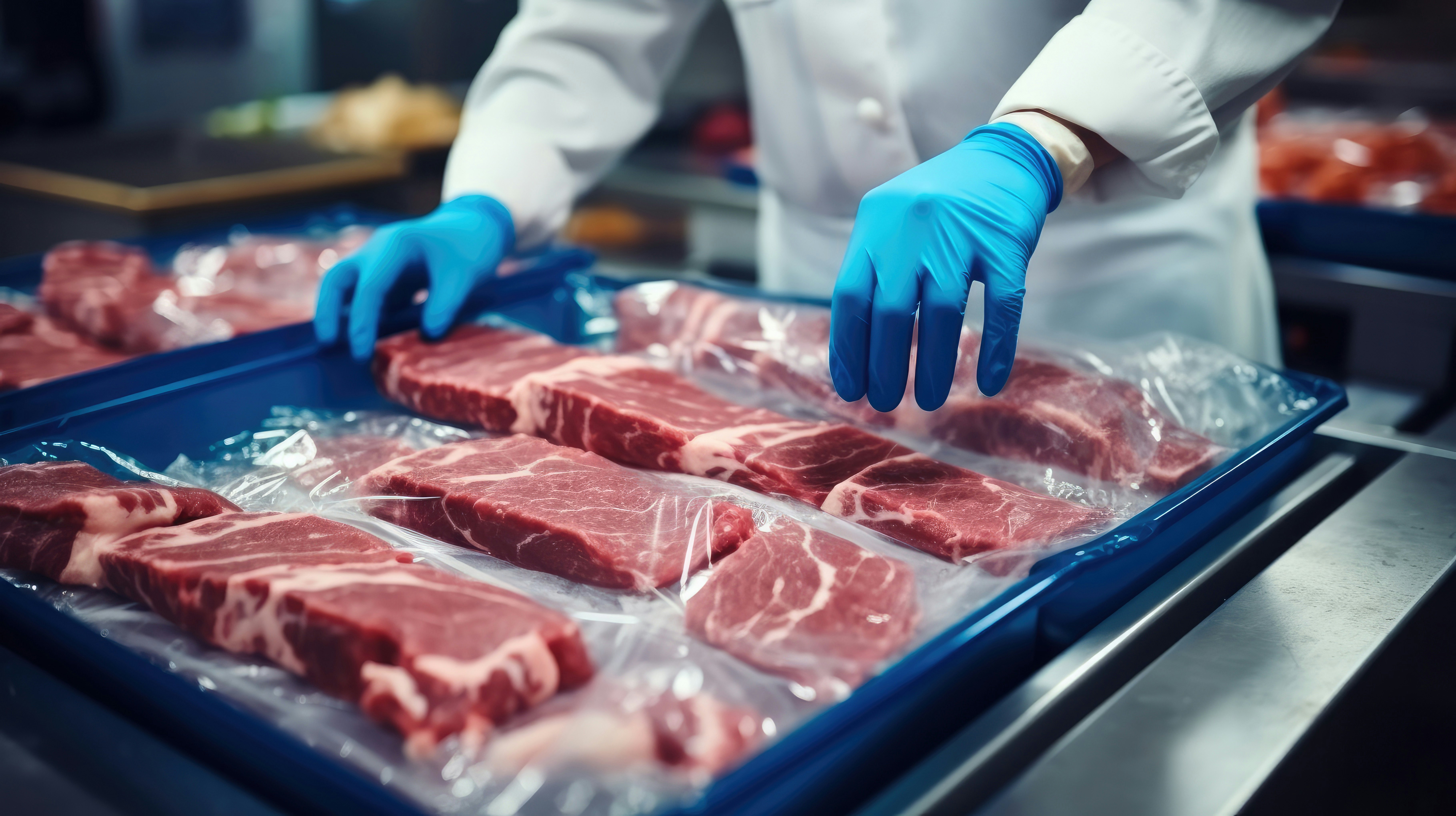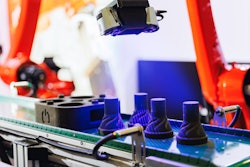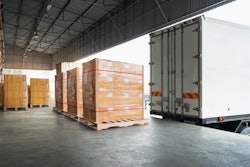Packaging World:
You do both a high volume in glass and a high volume of cans. How do you balance the mix?
Ken VonderHaar:
The mix shifted a lot during COVID-19, where we had about 40% glass and 60% cans, and some percentage was kegs. And of course, during pandemic, all the bars and venues shut down, so a lot more people were taking their 30-packs of cans home. That shifted the mix a little bit more, to higher than 60% cans, but predominantly cans are the higher volume. Cans are continuing to trend up in volume. They were even before the pandemic, and COVID-19 accelerated that. It looks like cans are going to be the biggest growth package for us moving forward.
You cited that 40% of your workforce is of an age that could potentially retire at any time. Given a tightening labor market (and it’s only getting tighter), what are you asking of your machine builder and OEM partners in terms of how they design their machinery, and how accessible they make their machinery?
Essentially, we’re asking for simplicity. We would like for all of the complexity to be under the hood, and we would like an operator interface that’s very simple, that’s easy to understand, and that our younger employees are able to interface with via some type of video screens. We also look for set-up procedures that are built into the operator screen. And we’d love it if they could help with training our operators to do that, also.
Would you allow your machine builder to remotely manage your equipment on the plant floor?
It’s always a challenge with our IT team to remote into anything in the brewery. And that’s just because of the risk. I think the trend is there, and we have to figure out how to do that. And at the end of the day, yes, we want to do that. We need to figure out how to do that safely and try to do it in a manner that doesn’t put our operations at risk. We [currently] do that on some of our equipment, but it’s very limited, and it is on equipment that it’s not accessible to the whole network. So, we will have to figure out how to do that more with the packaging machinery providers.
When do you bring your machine builder partners into the internal conversations about sustainability, whether it’s energy efficient machines or new materials?
There are two efforts that we’re undertaking with regards to energy efficiency and sustainability.
One is to make the current operation more sustainable and more energy efficient. And we absolutely need our equipment suppliers to come in and help us figure out how to minimize compressed air usage, how to reduce gas usage, and how to limit electricity usage. That is the first step.
But to your point, we are approaching our new projects with earlier involvement with the suppliers and more of a partnering mindset than we have in the past. Back then, it was really a lump sum, competitive bid type of operation. And we still will do some of that. But in some of the more complex jobs, we will start choosing partners to deal with and then start figuring out what those machines look like to maximize flexibility, minimize complexity, have the training documentation in place, and, again, make the machine as simple as possible.
You mentioned that you are doing some new things with rainbow packs or variety packs. Tell us about your early experiences, cutting your teeth with new multipack lines, and what the balance of that will look like going forward, between doing it yourself, versus hiring it out to contract packing.
We’ve installed two lines now that will make a variety pack. And, of course, a variety pack translates to a lot of SKUs that we have to run. We spent years studying what’s the right way to try to install a variety pack line. Do you depalletize, or palletize, a bunch of product for days and days? And you only make a brand change every three or four days on the filler, and then you mix it together?
The answer, we found out, was that wasn’t really the right solution from an economics perspective. What we’ve chosen to do is make lines with large, full-can accumulation systems on them. About every four hours, we will convert from Flavor A to Flavor B, and C, and D. And then once we’re running Flavor D, we will merge the other three flavors together into the packer and put them together into a variety pack.
We have two operations that do that. We have two different design concepts on how that is done. And as with anything, there are pros and cons to each design concept. But essentially, it’s full-can accumulation, and then we’re running it to the packer. What we have found, of course, is that adds great complexity. It increases our changeover time, and it reduces our yield for the line because we’re constantly changing to the new flavor.
And that’s always in competition with just getting high-volume brands out the door. You can run our high-volume brands—say, Bud Light—for a week. And the question is always a balance between how much of that do I want to do? How much do I want to let co-packers manage that complexity segment, versus how much do we want to do it in-house? And it really comes down to what is the cost of co-packing. And in some areas, the cost is fairly high, and it allows us to make a pretty significant investment in-house and make a good economic return ourselves. And in some other areas, it will not.
In the current labor environment, training is key, and you’ve made an investment in a bricks-and-mortar training facility. But with so many production facilities, each with so many lines, and so many different pieces of equipment across your enterprise, how do you select what equipment to purchase and install in the training facility?
We decide, for example, do we put [Pneumatic Scale] Angelus seamer in this training center or a Ferrum seamer? We decide that on a couple of factors. Number one, how many Angelus machines do I have versus Ferrum machines? And in this particular case, I have a lot of Angelus machines and only a few Ferrums. But it also depends on risk—if we’re having a lot of problems on a Ferrum because our people don’t know how to work on the machine, we will make a decision to put that machine into our training center. But for the most part, it’s based on where our biggest knowledge gaps are around daily operation, which means if there’s a machine that we have more of, we will tend to pick that one, since that one creates the most risk of downtime.
Anheuser Busch has both can-making and bottle-making operations and capabilities. But only about a third of your total output for beer ends up using these in-house suppliers. Why is that? What’s your relationship with traditional suppliers of bottles and cans, given you could be your own supplier?
We want to have a robust vertical operation primarily to control cost and quality from our other suppliers. When our metal container division was established in the early 1970s, it was primarily to control the quality of the product. We were not getting good quality from our external suppliers, and we wanted to do it ourselves. But it also gave us insight into the cost to make the product, and we learned what kind of margins should be on that product.
Our vertical operations not only give us surety of supply for some of the commodities that are in tight supply—like cans or bottles right now—but more importantly, they give us the ability to manage our contract costs when we buy from other folks. The whole business model with vertical operations is not to grow that as fast as the beer company grows. It’s to grow that with enough critical mass, such that the other suppliers would say, “Hey, I need to be cost competitive on this. Otherwise, Anheuser-Busch will build their own.”
What’s the speed of recycling and circularity with your bottles and cans, as it relates to making your own or buying them from suppliers?
Once the consumer recycles the can, it’ll go back to the smelter. And the turnaround time with these operators is very short, or at least it can be very short. It’s at the point where smelters can turn that [recycled can] into a coil in just a matter of days, and a few days later get that coil back to us. And if we make a can in our can plant down in Arnold, Mo., 30 miles south of us in St. Louis, we will typically fill it [with beer] within a day of it being made. And then it’ll be on the market within a couple of days after that. Obviously, it depends on the aluminum supplier and when he wants to try to put recycled product into his work stream there, but it can be a very quick turnaround, and it’s infinitely reusable.
Payment terms, especially extended payment terms, are often a sore spot at the intersection of OEM and CPG, especially with large CPGs. How do Anheuser-Busch and Budweiser packaging operations approach their equipment vendor relationships with regards to extended payment terms?
We have certain targets around weighted average payment terms that are set by our Board of Directors. And we understand that long payment terms are not popular with our suppliers and really, quite honestly, we’re not trying to make things tough for our suppliers. We recognize that that is a burden there. But what we will try to do is work with the suppliers to try to perhaps change our progress payments, to try to get money earlier into the process. Or, generally speaking, try to partner with them a little bit more to work with better overall terms and conditions. Maybe not necessarily the payment terms, but, say, liability terms and that type of thing. Then we can work with them to make it an easier contract for them to sign.
Seltzers were a recent big trend for beverage manufacturers small and large. Will we see them keep growing, or give way to something new?
It’s hard to say what the next trend is because the consumer defines the next trend. We think that the seltzer market still has more legs to it—more flavors and that type of thing—but our innovations team is constantly working on all kinds of different brands and all kinds of different varieties to try to figure out what the next big thing is going to be. We’ll test market that and see what sticks.
So what’s the next big thing coming out of Budweiser on the packaging side of things?
I wish I knew. We have the aluminum bottle, which was a nice, innovative package. It sells a lot, but it’s not high-volume seller. We have a lot of new innovation that’s primarily around the package and the flexibility around the different types of packages. You will see us introducing, say in the next say year or so, a completely new package for a machine that was developed in-house by Anheuser-Busch. It will be introduced into the market for some secondary packaging for bottles.




